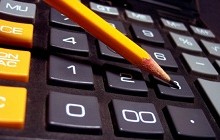In past postings I have talked about the very difficult conversation caregivers can have with their older parents or loved ones who are no longer safe behind the wheel. The rate of per mile casualties for drivers 75 and over escalates rapidly, approaching and then exceeding that of under 20 year old male drivers. How does one tactfully and sensitively talk with an older adult into giving up the keys of that four-wheel machine that is so entwined with their sense of independence. But should we feel safer after that awkward conversation and our older loved one is back to curbside as a full-time pedestrian? Not necessarily.
According to recent national statistics, fully 19 percent of all pedestrian traffic fatalities involved adults 65 years of age or older. Translated, a 65+ year old’s chances of being killed in traffic while walking is fifty percent higher than other younger pedestrians. Some of you may see that and jump to the conclusion that well, that is an urban problem…not a suburban or rural one. Not so. The data show that pedestrians in small towns are more likely to be killed or injured than those in more urban or metropolitan areas. And a majority of all pedestrian, auto or cycle fatalities occurred in rural areas.
Every two hours a pedestrian in America is killed. There is an initiative in both national houses to introduce new legislation to address the issues in an law known as the Safe Streets Act. It is all about smarter planning of American’s streets and sidewalks so that at least the new road or walkway construction will be safer for older adults. And there are new safe street policies being embraced by more than 600 city and county governances across the United States. While there are national and local governmental moves afoot to make streets and sidewalks safer for pedestrians, that alone may not make your older loved one safe enough.
If you are a caregiver to an older loved one who is a full- or part-time pedestrian, you should not feel that you need to take your loved one off the sidewalk to protect them. But you can help them to improve their “pedestrian fitness.” For starters, have their hearing checked as part of a regular physical exam. If your loved one can hear something coming from a roadway, they will have a much better chance of finding safe ground than if not. By the same token, have their visual acuity checked yearly to make sure the glasses they may wear are sufficient to see the number of seconds left on the crosswalk light. Finally, your loved one does not need to go through training to be an Olympic runner or walker, but they need to have the best gait possible. As adults age, they point decline from a slow walk to a shuffle which is an accidental fall waiting to happen or an inability to get out of the way of oncoming traffic waiting to happen. See if their physician can write a prescription for physical therapy.
Charlotte Bishop is a Geriatric Care Manager and founder of Creative Care Management, certified professionals who are geriatric advocates, resources, counselors and friends to older adults and their families in metropolitan Chicago. Please email your questions to info@creativecaremanagement.com.







